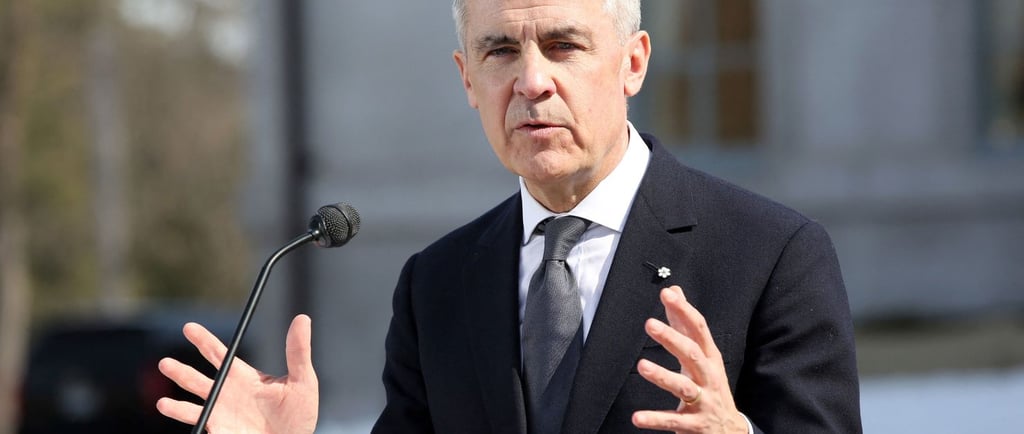Canada: Mark Carney Ascends to Premiership at a Critical Moment for the Nation
As Canada stands on the edge of both economic disruption and political realignment, the elevation of Mark Carney to the office of prime minister has come not merely as a change in leadership but as a potential redefinition of the country's national posture. At a time when sovereignty, unity, and global standing are increasingly contested, what kind of leader does this moment truly require?
CANADA
Daria Maiorova
3/27/20253 min read


Mark Carney ascends to the prime ministership at a defining moment for Canada. His sweeping victory in the Liberal Party leadership contest, securing 85.9 percent of the vote on the first ballot, reflects both the consolidation of party elites behind his candidacy and a broader desire among Liberals for a credible new face to counter mounting public disillusionment. At the age of 59, Carney brings with him a unique pedigree, having led both the Bank of Canada and the Bank of England through periods of considerable global financial instability. Yet the challenges now before him are political in nature, not technical, and shaped by a volatile domestic mood and a deteriorating international environment.
The most immediate crisis facing the new prime minister lies in the collapse of Canada’s diplomatic and economic relationship with the United States. The Trump administration's imposition of sweeping tariffs on Canadian goods, coupled with incendiary comments regarding potential annexation, has triggered what former Prime Minister Jean Chrétien described as a national unity crisis unmatched since the height of the Quebec sovereignty movement. Economic projections suggest the trade penalties could reduce Canadian GDP growth by 1.5 to 2 percent within a year, with the manufacturing-heavy province of Ontario and resource-dependent Prairie provinces bearing the brunt of the impact. The Canadian auto sector, deeply integrated with American supply chains and responsible for over 125,000 direct jobs, faces particular jeopardy.
Carney’s past roles suggest he is well suited to manage economic complexity under pressure. His leadership at the Bank of Canada during the 2008 financial crisis and subsequent stewardship of the Bank of England during the Brexit negotiations have been cited as evidence of his aptitude for navigating high-stakes international disruptions. However, as Carney himself admitted during his leadership acceptance speech, even the most seasoned central banker is never fully prepared for the political intricacies of a trade war with a nation that has long been Canada's closest ally.
Domestically, Carney's entry into politics comes amidst a dramatic realignment in Canadian voter sentiment. The Liberal Party, previously trailing the Conservatives by as much as twenty points, has regained ground in recent polls, achieving parity. This reversal has been largely attributed by political analysts to a nationalist backlash provoked by the Trump administration’s aggressive stance. Canadians appear to be rallying around the federal government in defence of national interests, at least temporarily overriding earlier discontent with Liberal governance.
For the Conservative Party, led by Pierre Poilievre, this changing dynamic presents a strategic challenge. His campaign, focused on inflation, housing unaffordability, and populist appeals, risks becoming discordant with an electorate increasingly focused on national sovereignty. Attempts by Conservative figures to characterise Carney as an aloof, elitist technocrat have thus far failed to gain traction. Polling data suggests the public regards his economic background not as a liability, but as an asset in navigating the unfolding crisis.
The New Democratic Party, meanwhile, appears to be drifting into political irrelevance. Leader Jagmeet Singh’s recent decision to terminate the party’s confidence agreement with the Liberals, once seen as a calculated assertion of independence, now seems poorly timed. With progressive voters consolidating behind Carney, the NDP finds itself excluded from the centre of power at a moment of national reckoning.
Beyond North America, Carney’s premiership may also herald a shift in Canada’s global positioning. There is likely to be renewed urgency in diversifying trade away from the United States, with closer ties sought with the European Union, the United Kingdom, and Indo-Pacific economies. Carney’s prior engagement in global green finance initiatives further suggests Canada may assume a more proactive role in international climate policy, potentially including new carbon border adjustment measures. Defence spending, long a contentious issue, will probably come under renewed scrutiny amid broader geopolitical instability. The renewed rhetoric regarding annexation has also prompted calls for increased investment in Arctic infrastructure and northern defence capabilities.
Carney's appointment represents both continuity and departure. He maintains the Liberal Party’s progressive policy direction, yet brings a technocratic, results-oriented approach to governance that many hope will offer a corrective to what has been perceived as years of performative politics. Whether this hybrid leadership model proves sufficient to stabilise a country under mounting internal and external stress remains to be seen.
Ultimately, Carney's success will not rest solely upon his financial expertise. It will depend on his capacity to articulate and enact a vision of Canadian sovereignty and purpose that resonates with citizens increasingly aware that their nation’s autonomy can no longer be assumed as given. The measure of his premiership will be the extent to which he can mobilise national resolve in an age of escalating uncertainty.


